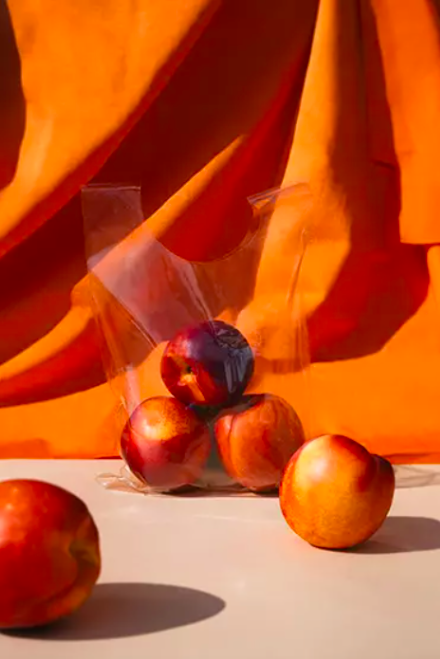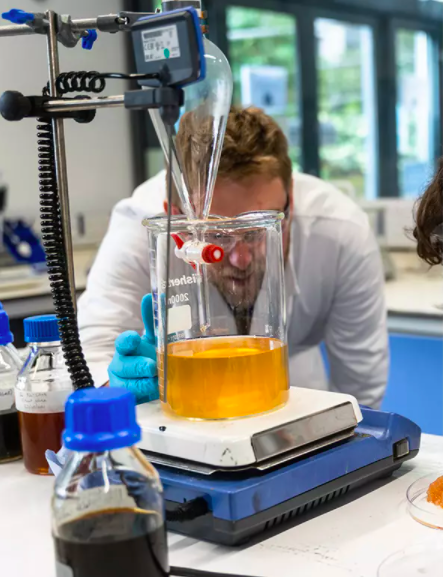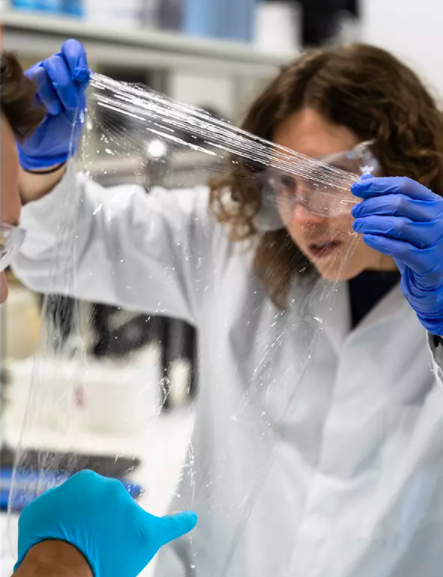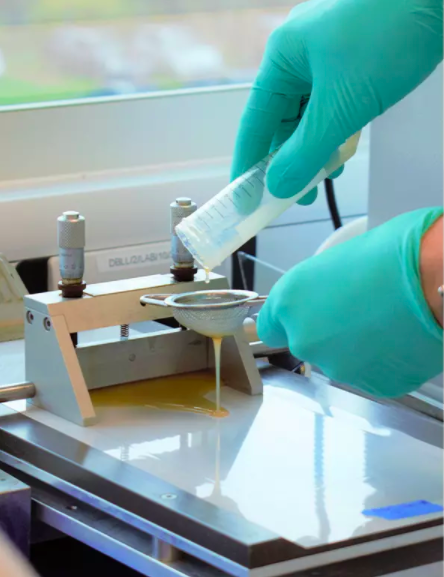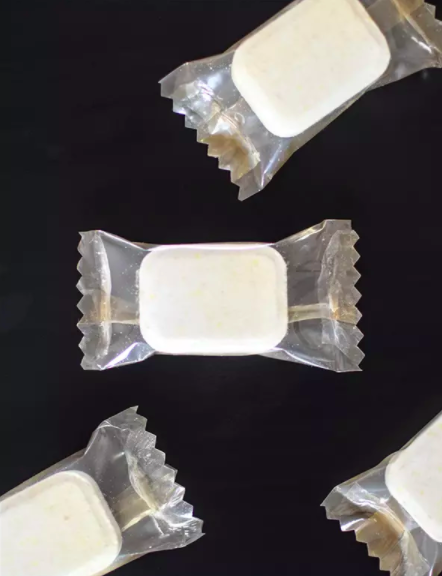To Reduce Marine Pollution, Innovation Is in the (Plastic) Bag
Meet the finalists of the TOM FORD Plastic Innovation Prize, a science-based competition to remake ocean-polluting thin-film plastic bags from eco-friendly alternative materials.
By Sarah Murry
Apart from the three-quarters of Earth that’s covered with water, the most ubiquitous material on our planet just might be plastic — and without intervention, the amount of plastic trash that flows into the oceans every year is expected to nearly triple to 29 million metric tons by 2040. When United Nations representatives from 175 countries inked a first-of-its-kind global treaty to restrict plastic waste last month, there was renewed hope that we can stem the tide.
But efforts can’t only be about cleanup, they have to halt the manufacture of virgin plastic in the first place. It’s with this goal in mind that a global cohort of innovators are competing in the TOM FORD Plastic Innovation Prize, a unique science competition to remake disposable thin-film plastic — widely used for things like sandwich baggies and as packaging to protect clothing and consumer electronics during shipping — from less-harmful (and ideally regenerative, biologically degradable) materials.
Behind the competition is American fashion designer Tom Ford and ocean health non-profit Lonely Whale. This week they announced eight finalists, who share in an award of $200,000 to encourage the development of their technologies. Their products range from completely compostable packaging made of seaweed to replacements for plastic made from plant protein.
“What we accomplish together through this competition will catalyze global change across continents, countries and industries, which is urgently needed to address plastic pollution,” Ford says. “If the ocean is polluted and in danger, then so is the planet and so are we.”
The finalists, eco-startups from all over the world, tap alternative materials drawn from nature, such as bacteria, seaweed, algae, peas, and sugar cane. They are: Genecis from Canada, Lwanda Biotech from Kenya, Marea from Iceland, Sway from the US; and Zerocircle from India. Hailing from the UK, there are Kelpi, Notpla, and Xampla, a University of Cambridge spinout inspired by the strength of spider silk, turning proteins, from common plant sources like peas, into high-performance plastic-alternative materials.
Each year, about 180 billion thin-film plastic polybags are used by the fashion industry and the average US family uses between 500 and 1,500 disposable plastic baggies. Thin-film plastic makes up an estimated 46% of the some 14 million metric tons of new plastic that enters the ocean annually.
Searching for scale in the real world
Competition judges, including HP’s Chief Impact Officer and Global Head of Sustainable Impact Ellen Jackowski, comprise a who’s who of science, fashion, design, Hollywood and social influencers, as well as executives from sustainability-minded corporations in finance, technology, and consumer products. Some of these companies, including HP, Nike, J. Crew, Herman Miller, and TOM FORD Beauty, are set to test the finalists’ alternatives to thin-film plastic polybags in their supply chains.
“Polybags typically are used to protect a product from the point when it is put in the box until just that moment when it is opened up by the customer,” Jackowski says. “There’s a lot of innovation that’s needed to make sure that we find an alternative material that does a great job protecting the product and offers an incredible unboxing experience, but then does not leave an environmental footprint that lasts decades beyond its needed use.”
HP has been working toward its goal of achieving 75% circularity for products and packaging by 2030 by focusing on product lifecycle, including material sourcing, design, service-based delivery, and recycling programs. Since 2016, nearly 2.9 million pounds of ocean-bound plastic has been used in HP products.
Next phase of competition
This month the finalists will enter a year-long material testing phase sponsored by Nike, to ensure their materials are biologically degradable, minimize negative social and environmental impacts, meet industry performance standards; and are also cost-competitive, scalable, and market-ready by 2025.
This phase is rigorous, to say the least, with in-lab testing led by the New Materials Institute at the University of Georgia, and field testing in the Caribbean and Pacific Northwest, where the Seattle Aquarium will lead out on a first-of-its-kind laboratory-based modeling designed to approximate the effect of the materials on the health and well-being of marine mammals.
After the 9-month testing phase, the final three winners will be announced early next year. They’ll share in a prize pool of more than $1.2 million in investment capital and then move into the accelerator phase of the competition to scale their businesses.
“Innovation is the root of transformation,” Jackowski says, “The TOM FORD Plastic Innovation Prize not only incentivizes extraordinary, science-based innovation, it provides a path to replace thin-film plastic and scale viable and biodegradable alternatives that will help protect our ocean and our planet.”

